Full Belly Files | The Many Paradises of Paso Robles
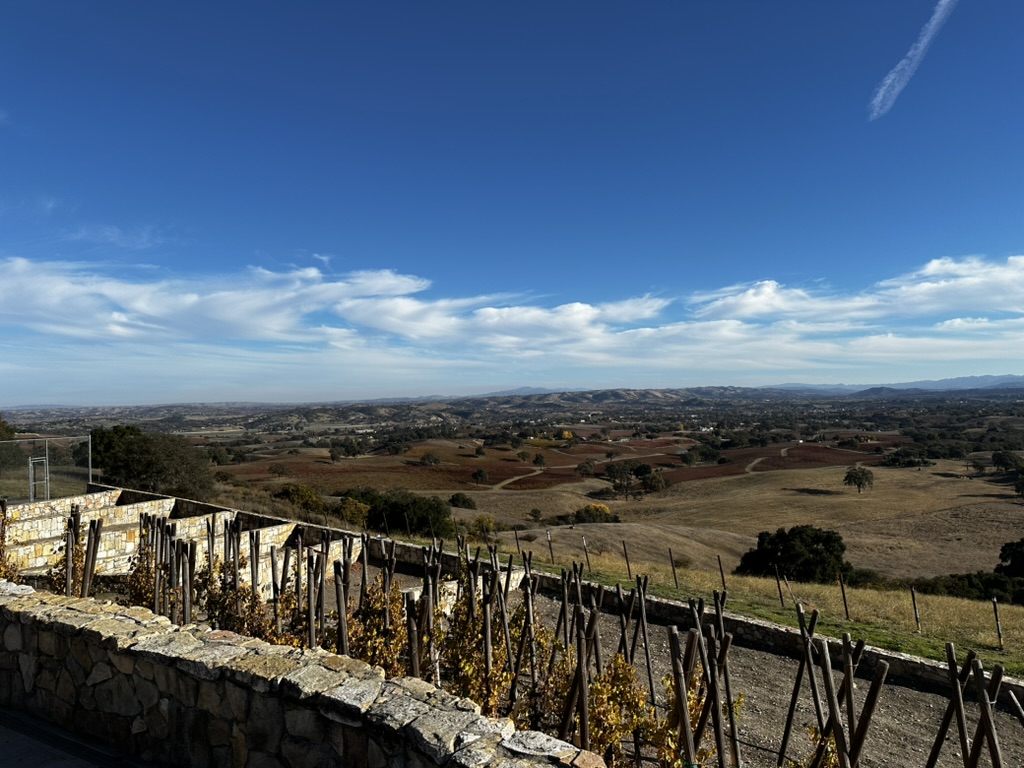
This edition of Full Belly Files was originally emailed to subscribers on January 19, 2024. To receive Matt Kettmann’s food newsletter in your inbox each Friday, sign up at independent.com/newsletters.
Panipuri, aloo bonda, and butter chicken stewed a stone’s throw from an estate vineyard. A hidden artist colony awash in literary meaning and culinary concern minutes from downtown. A pasta factory whose fresh noodles fuel both school cafeterias and the buzzing restaurants a few blocks away. Homegrown organizations aimed at elevating equity in the industry and calling attention to forgotten grapes. Family-run wineries achieving both billion-dollar buyouts and investing further in the future of the region.
Just two decades ago, few would have predicted that the once-dusty cowboy town of Paso Robles could mature into a place for such diverse experiences. But in just two recent and very brief visits — amounting to just three over-nights total — I engaged with all of the above and so much more.
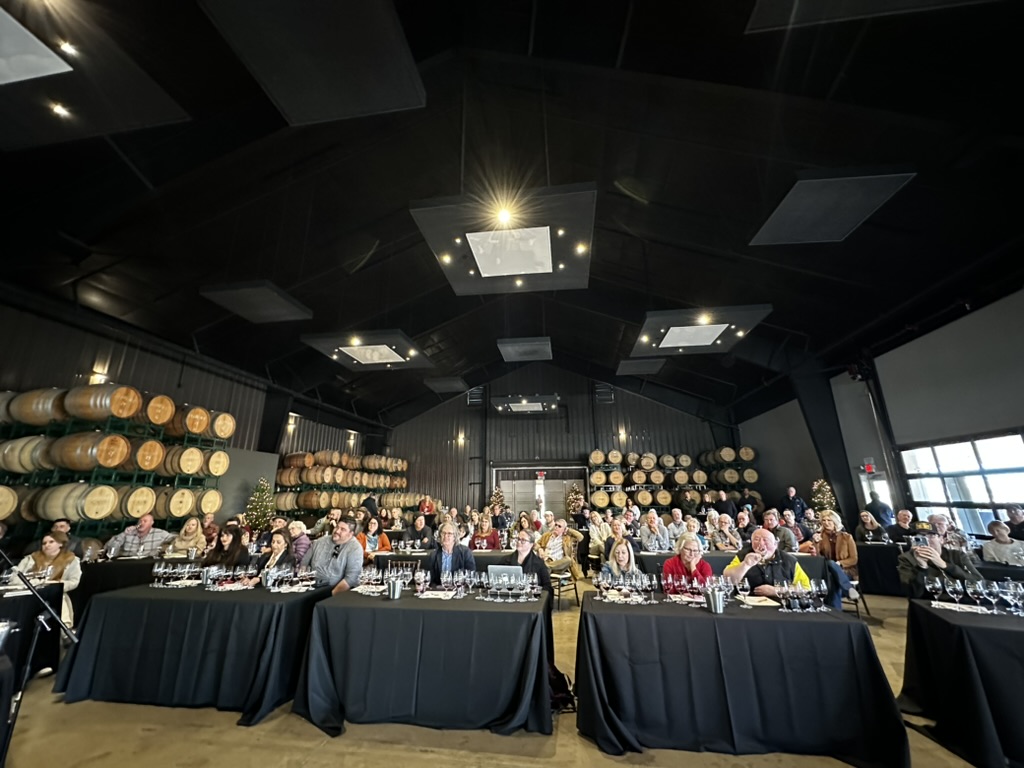
My December adventure began at Cabernet Franc Day at Cass Winery, where I led a discussion with winemakers and grape growers about the savory, peppery variety that still sits in the shadow of cabernet sauvignon. The organization behind the gathering, which is shifting to the name “Cabernet Franc Masters” to embrace an increasing global approach, is led by Neeta and Kunal Mittal, the couple behind LXV Wine.



[Click to enlarge] From left: LXV’s sauvignon blanc, Neeta Mittal of LXV Wines prepares panipuri in her home, LXV’s blanc de sangiovese with Sanskrit labels | Credit: Matt Kettmann
Known for pairing spiced cheeses and other flavorful treats with LXV wine flights at their tasting room in downtown Paso — as I mentioned in this roundup — the Mittals are proudly putting their Indian heritage on the forefront of their enological endeavor. Given their reputation, I was excited to dine at their vineyard house in the Willow Creek District over a home-cooked meal, where we paired blanc sangiovese, cool-climate syrah, and barrel samples of newer estate wines with a wide range of authentic Indian dishes. I left with a bag full of spice packs and instructions on how to use them, but I’m more inclined to just return for another Mittal-made dinner someday soon
The next morning, I drove through Paso’s western hills to reach Jada Winery, where I haven’t been in at least seven years. Since then, the brand was purchased by Riboli Family Wines, who started making wine at San Antonio Winery in downtown Los Angeles prior to Prohibition four generations ago. They’ve steadily expanded into Napa, Monterey, and San Luis Obispo counties, launching labels like San Simeon, Maddalena, Windstream, and Opaque, most of which depend on grapes that the family grows on Paso’s warmer eastside. The Ribolis are also behind the sparkling, flavored superstar brand Stella Rosa, a collaboration with partners in Italy that is helping to fund the family’s increasingly quality-focused ambitions.
Leading the push for top-shelf wines is Anthony Riboli, and the family’s 2022 acquisition of Jada was the strongest move toward luxury yet. The winery, located on Vineyard Drive near famous names like Saxum, Denner, and Villa Creek, became known for that dominant Paso style of rich, dark, texturally robust red wines upon its founding by heart surgeon Jack Messina back in 1999.
In tasting through the barrels and latest releases with winemakers Josh Harp and Nate Hall, the message was that the Ribolis are letting the team carry forth with the formula that’s worked for two decades: a mix of Rhône blends, Bordeaux blends, and, occasionally, Rhônes blended with Bordeauxs, with the occasional tannat or graciano tossed in as well. (News came out last week that Harp just left the winery for a job at Caliza Winery, allowing Hall, whose been Harp’s assistant since 2017, to rise to the top winemaker position.)
But Jada is not the Ribolis’ only venture into the coveted westside of Paso Robles. Right around the time they bought Jada, the family acquired the former Rabbit Ridge property, also located in the Willow Creek District and overlooking the vineyards of Booker, L’Aventure, and others. Anthony took me to the top of that property, where a bizarrely laid-out mansion — abandoned since the sale, likely to just be torn down — overlooks a vast expanse of the entire Paso wine region. On the steep, rocky slopes below, the Ribolis are replanting acres of vines, investing in what their fifth and sixth generations will be creating in the decades to come.


Inn Paradiso owner Steven Werndorf in his orangerie (left) and Slayton by Jesse Baker, one of the many wines poured during our dinner at Inn Paradiso | Credit: Matt Kettmann
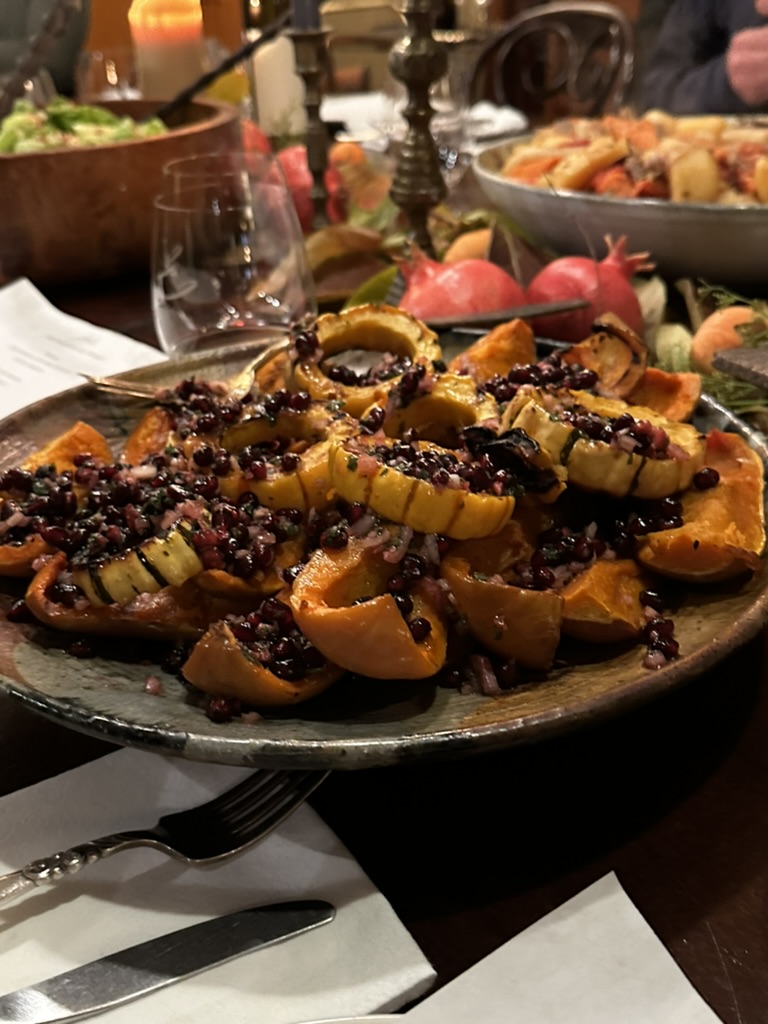
My destination for that evening was one of the most whimsically designed-yet-meaningfully curated hotels that I’ve ever seen. The only Paso Robles lodging to get a Michelin Guide mention, the Inn Paradiso is an eclectic collection of suites and cabins adorned with arts of all sorts and surrounded by lush, alluring landscaping that makes you feel disconnected from the developed world, even though Walmart is a mile away. Opened nearly 14 years ago in a 1970s-built compound by movie poster designer and collector of all things fascinating Steven Werndorf, the inn is evolving into a hub for Paso’s more visionary vintners, chefs, and visitors.
That’s who joined us for dinner that evening, from known names like Jason Haas (Tablas Creek), Tyler Russell (formerly Cordant and Nelle; new project forthcoming), Anthony Yount (Denner/Royal Nonesuch Farm), and Maggie Tillman (Alta Colina) to emerging — or at least newer to Paso — folks like Jesse Baker (Slayton), Matt Suroff (Tribeca), and Juan Mercado, the famed Napa winemaker behind Realm Cellars who’s just now releasing his Paso project called RIISE. Over an unending series of pours from bottles new and old, we enjoyed a menu prepared by Chef Staci Valentine that featured slow-roasted squash in a mint-pomegranate pesto, salt-and-pepper mushrooms, herby salad with feta, halvah, and almonds, and lamb raised on the Tablas Creek Vineyard, concluding on the Fairhill Farms–grown apple tart with vanilla bean ice cream.
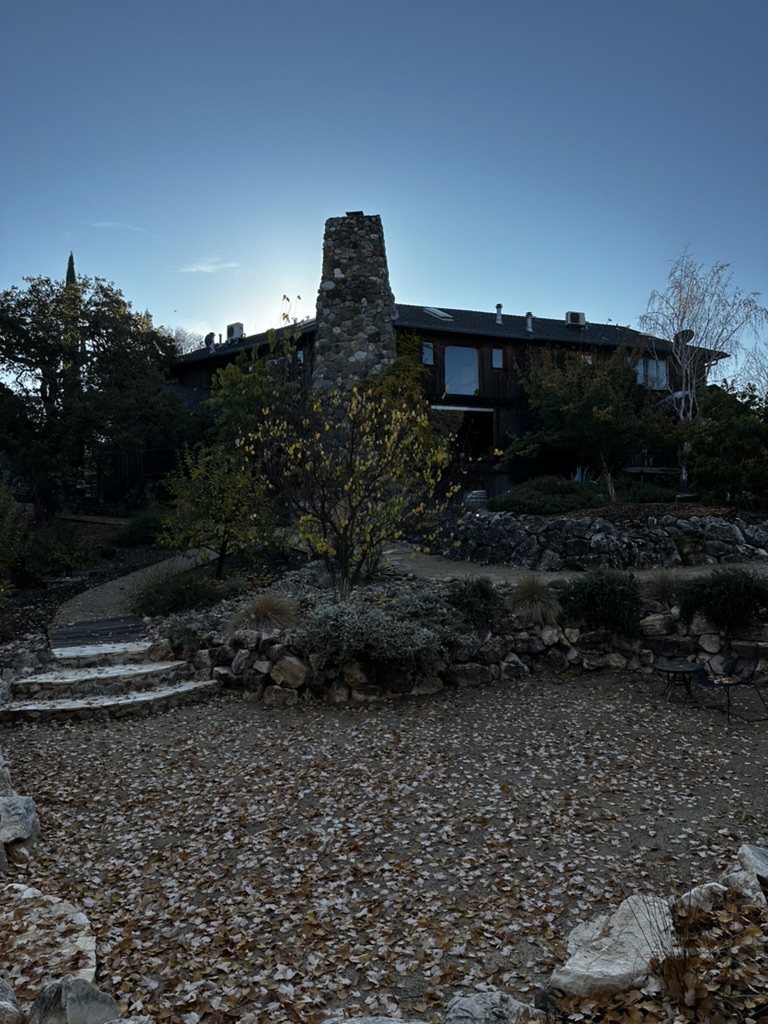
After a deep sleep, I wandered the property the next morning, through the bamboo stalks and indoor orangerie, past the pool and persimmons, and found Werndorf preparing for his flight to Tokyo later that day. He made me a cappuccino in his kitchen, which was still scattered from the night before, and showed me through some of his personal cabin, which also appeared to be in disarray from decades of collecting. But as Werndorf detailed the backstories behind this vinyl album, that mezcal bottle, and the furniture and art pieces here and there, I realized that there was a genius-level order to the scene, one that could lead to hours if not weeks of conversation.
Back to so-called civilization, I pulled into the warehouse district of Tin City, where many of the most coveted producers in Paso Robles craft their wines. Curious about the proliferation of white, pink, and orange wines from this zone, I met with Xavier Arnaudin of Union Sacré, who is making some of the most refreshing, delicious, and affordable wines on the entire Central Coast right now. I’d end that afternoon tasting with Dave McGee, whose Monochrome Wines features only white grapes, albeit blends of varieties that almost never appear in the same bottle anywhere else.
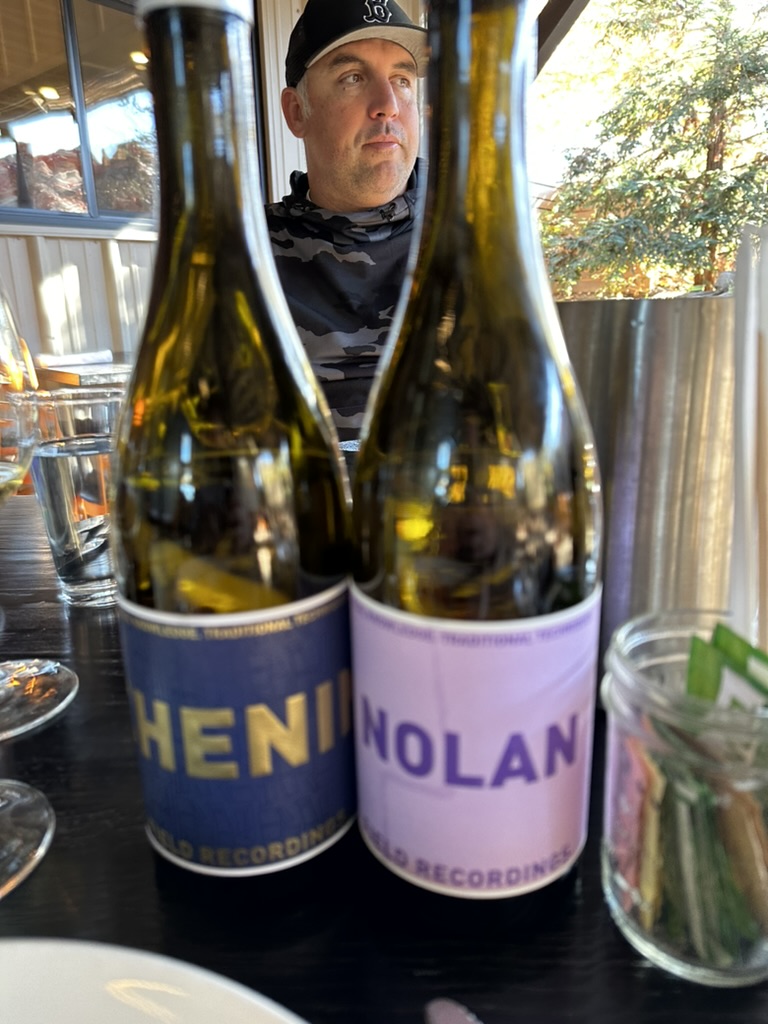
Lunch was with Andrew Jones of Field Recordings, which makes more white wines than reds, and Brian and Stephanie Terrizzi of Giornata Wines, who produce an entire range of orange wines based on Italian varieties. Before we sat down for lunch, Brian took me down the block to see the growth of the couple’s other venture: Etto Pasta, a handmade hobby gone so rogue that it’s now being made by cutting edge, Italian-designed machines at a near-industrial scale.
Though the brand is beloved by Central Coast foodies who’ve been visiting its Tin City store since it opened in 2018, Etto Pastificio is also a major supplier of pasta for school cafeterias from Monterey to Orcutt, a market further served by the new facility. The Terrizzis hope to start public tours of the factory soon, and they are now serving those freshly made noodles at Etto Pasta Bar, located next to their Tin City shop. (The restaurant space originally opened as Tin City Canteen, but that died during the pandemic, save for a brief McPhee’s outlet.) That’s where the Terrizzis, Jones, and I enjoyed guanciale-topped Tuscan kale soup and spicy amatriciana on gemelli pasta, among other dishes, while discussing wine trends.
A few weeks later, I was back at Etto Pasta Bar, sipping on Giornata’s Orango Tango while in the company of the region’s top female wine industry professionals, from winemakers like Molly Lonborg at Alta Colina (see her starring role in a Barbie video here) and Little Soul to grape growers like Hillary Yount of Royal Nonesuch to executives like Molly Scott of Justin Winery. Along with famed somms like Chuck Furuya and media pros like Susan Kostrzewa (who hired me 10 years ago at Wine Enthusiast) and Elaine Chukan Brown (who was just hired by Wine Enthusiast to review Napa), we’d been summoned by Amanda Wittstrom Higgins, who founded the women-in-wine empowerment nonprofit Dream Big Darling.
My Dream Big Darling day was bookended by two tastings that epitomize the Paso Robles scene: a morning spent with Connor McMahon, whose Fulldraw Vineyard wines represent an edgier, youthful Paso vibe; and an evening tasting through all 10 vintages of the flagship Soul of a Lion bottling from Daou Vineyards, the globally impactful brand founded less than 20 years ago that just sold for a whopping $1 billion. Both wineries were founded by outsiders to Paso — McMahon is from Iowa; Daniel and Georges Daou are from Lebanon by way of France and San Diego — and both represent the extreme levels of ambition, investment, and dedication required to succeed in the risky wine business.
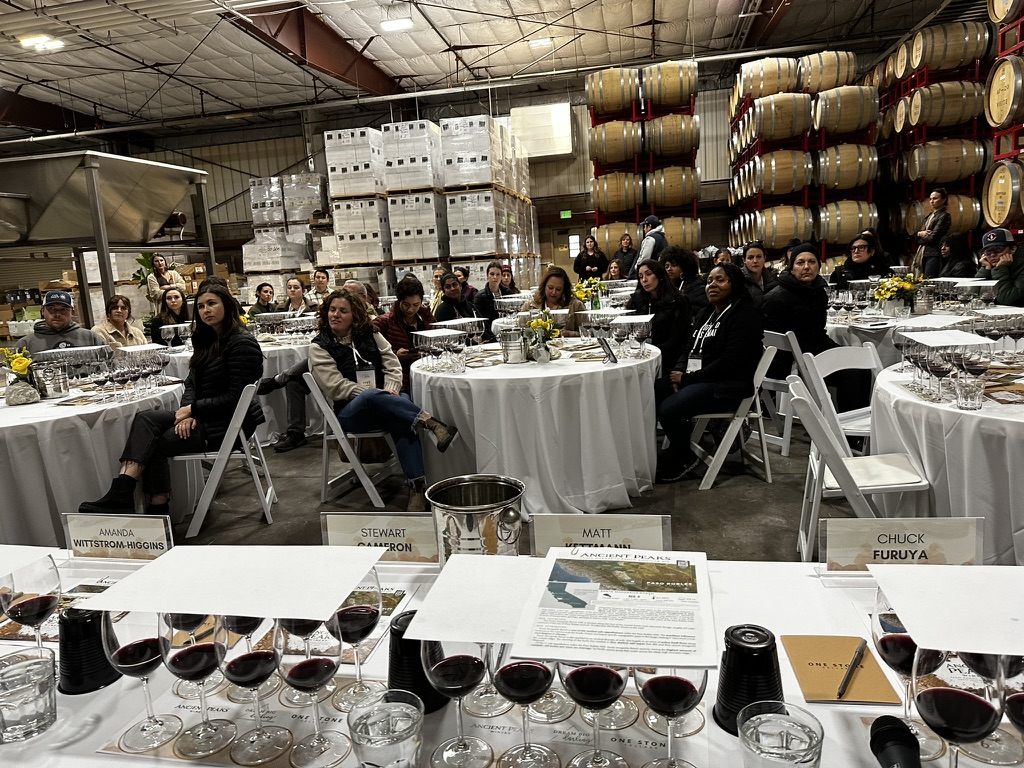
McMahon fell for Châteauneuf-du-Pape bottlings while working his college summers at a wine shop in Colorado, and decided to try his hand at winemaking by being a harvest intern for Booker Vineyard in 2011. He was named assistant winemaker months later, and sold a farm in Iowa to pay for his own 100-acre property, adjacent to Booker, that next year.


Miso black cod (left) and cauliflower foam topped with house-made caviar at Daou Vineyards | Credit: Matt Kettmann
Following his love of Rhônes, McMahon redeveloped 45 acres of vineyard to feature mostly grenache and syrah as well as some mourvèdre, graciano, cabernet sauvignon, petit verdot, clairette blanche, and grenache blanc. He sells about 60 percent of the fruit to such labels as Nicora, Herman Story, and Torrin, and then makes the rest into about 1,500 cases of Fulldraw.
Adorned with a series of dramatic labels that have personal stories behind them, the wines, with names like Chopping Block, Hard Point, and Honey Bunny, are quite powerful but balanced by the region’s inherent acidity and tannic structure. Based on the 2017 Honey Bunny and 2016 Hard Point McMahon pulled from his cellar to taste, that combination can certainly make wines that last.
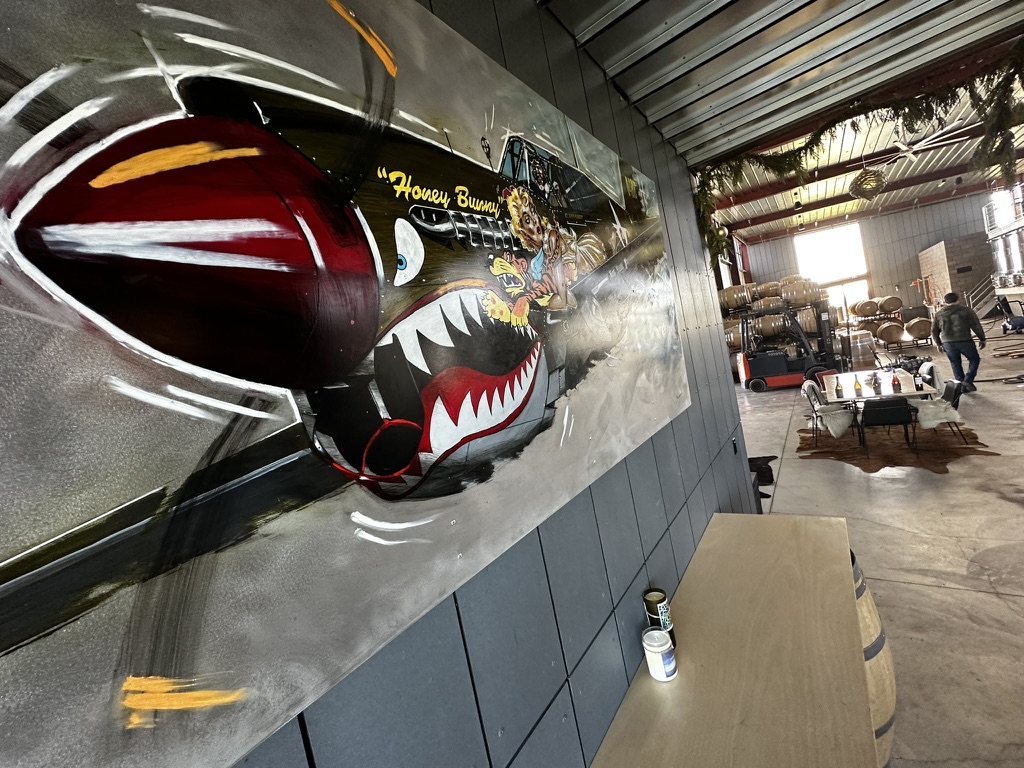
“Wines that last” was the exact strategy that Daniel and Georges Daou had in mind when creating the Soul of a Lion bottling back in 2010 as an ode to their father.
Initially derided for the audacity to produce such a pricy cabernet sauvignon–based, Bordeaux-style blend from Paso — at that time, the region was touted as a hotbed for Rhône-based blends — Daniel Daou combined his near-maniacal passion with his background as an engineer to craft Soul into a wine that competed with Bordelaise bottlings worldwide. Based on the billion dollars they were paid for their winery by Treasury Wine Estates last fall — a price no doubt also tied to the more affordable Daou bottles saturating grocery shelves and wine menus worldwide — it’s clear that the brothers’ bold experiment paid off.
To better understand that journey, I was invited to taste through the first 10 years of the bottling with Daou’s senior veep Maeve Pesquera and the new veep of enology and viticulture, José Alberto Santos, who was hired in 2022 after nearly two decades of running the global wine technology company Enartis. Rounding out our tasting crew was longtime Central Coast radio star and podcast producer Adam Montiel, who interviewed me, Chuck Furuya, and Elaine Chukan Brown earlier that day for his next podcast.
Santos first met Daniel back in 2010, when the winery was tiny but the Daous’ dedication was evident. Of the hundreds of winemakers that Santos dealt with on a regular basis at Enartis, Daniel was the one who called the most during harvest season. But unlike how he ignored most calls, Santos would answer Daniel since he always had something interesting to report.
Together, they developed the D20 strain of winemaking yeast, based on what they isolated from a block of cab on Daou Mountain. “It’s a very effective yeast, but it’s also extremely respectful of what you’re fermenting,” said Santos. Released commercially in 2015, the D20 strain became a stunning success, one of the top-selling yeasts in the United States with a growing legion of fans in Europe, South Africa, and beyond.
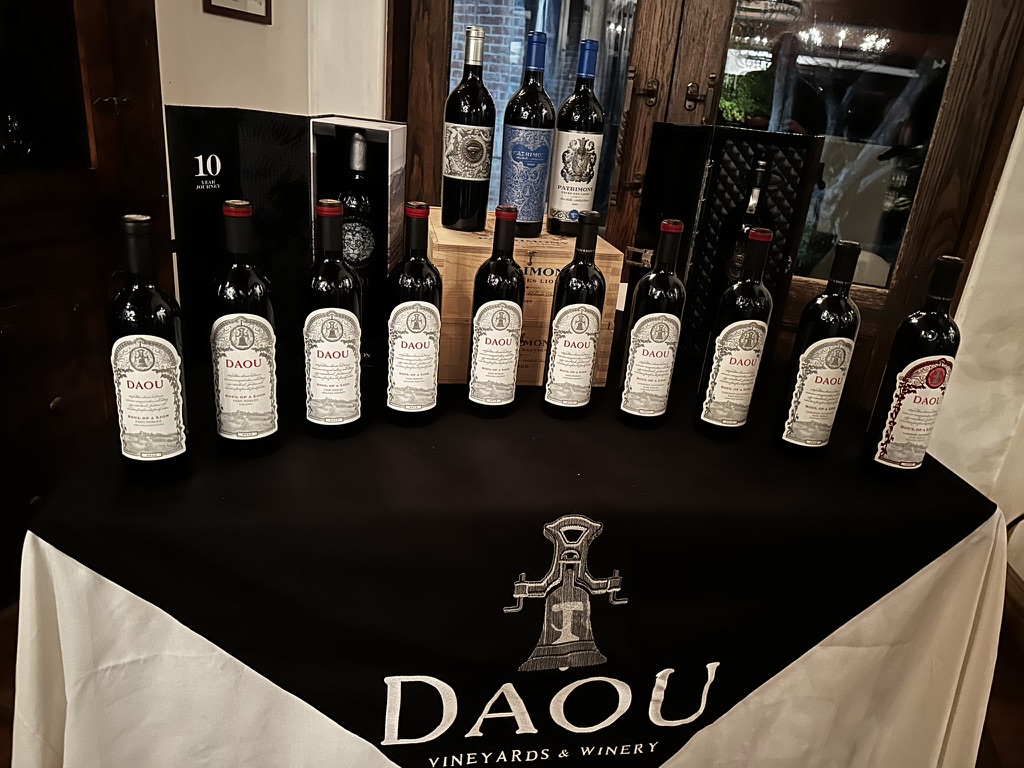
As we tasted each of the 10 vintages from the 2010 through the 2020 — that’s minus the 2011, which was not deemed a good enough year for Soul — the flavors shifted subtly, as aged wine can do. Darker licorice, tea leaf, espresso, and amaro-like flavors typified older vintages, while the younger wines showed a bit more energy. I’ve associated the use of D20 with a toasted walnut-like aroma and flavor in recent years, and that note did start to show for me on the 2015 bottling.
Across the board, from that still-very-alive 2010 to the still-very-young 2020, the consistency was each wine’s tannic frame, which stayed chalky and firm. That led us to talking about one of Daniel’s favorite topics: anthocyanins, the natural compounds that give wine its color and structure. According to Santos, they are responsible for Daou wines being simultaneously supple and firm. “At the end,” he said, “it’s bound anthocyanins.”
Such textures play very well with food too, which we tested in the four-course dinner that followed. Prepared by Chef Spencer Johnston, who oversees the extensive daily menu served at the Daou hospitality center, the courses moved from a foamy cauliflower soup topped with caviar he cured to a delicately miso’d black cod to a crispy duck confit atop cassoulet, finishing on some caramel-ish pot de crème. Without exaggeration, his cooking is reason enough to visit the winery.
Whether or not you approve of the opulent culture that rules the Daou scene, the brothers’ undeterred confidence in their mission, or their rather big-shouldered wines, Daniel and Georges built a true monument to wine on that mountain, overall benefiting the greater Paso Robles scene. I’m curious to see how their vision plays out in Tuscany, the next region on the Daou radar.
From Our Table
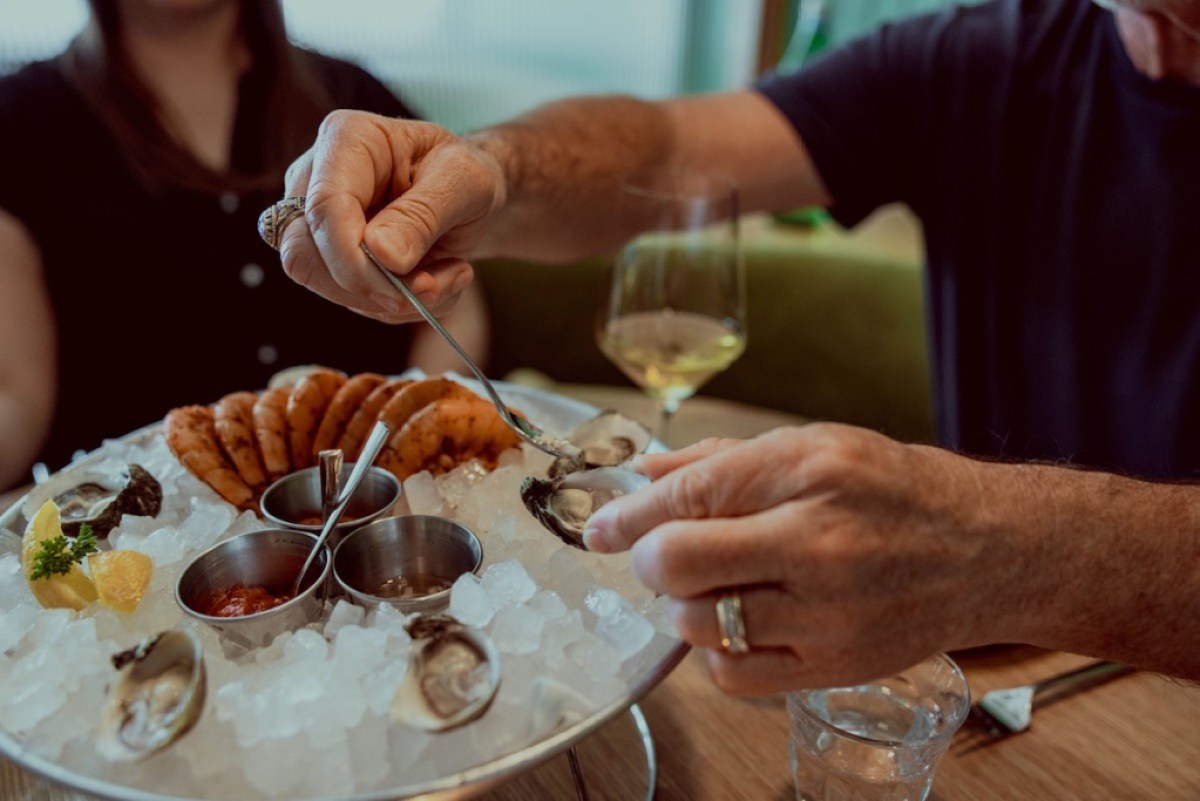
Here are some stories you may have missed:
- Rebecca Horrigan reports on Brass Bird Coffee perking up Carpinteria.
- Leslie Dinaberg suggests getting reservations now for Santa Ynez Valley Restaurant Weeks.
- Gareth Kelly spends some time at The Steward in Goleta for this travel story.
- I interviewed forager Melany Kahn to learn why searching for mushrooms can be great for the whole family. (She visited the Botanic Garden last Saturday.)
- I can’t remember if I already shared this one already, but Happy Chance is now making concentrated cannabis pills.
- I searched through a forgotten corner of town to find Powers Avenue, where High Seas Mead is now running their tasting room.
Premier Events
Sun, Apr 28
6:00 PM
Santa Barbara
AHA! Presents: Sing It Out!
Thu, May 02
5:00 PM
Santa Barbara
Things with Wings at Art & Soul
Sat, May 04
10:00 AM
Lompoc
RocketTown Comic Con 2024
Sun, Apr 28
11:00 AM
Santa Barbara
Santa Barbara Earth Day Festival 2024
Wed, May 01
7:30 PM
Santa Barbara
American Theatre Guild Presents “Come From Away”
Thu, May 02
5:00 PM
Santa Barbara
100th Birthday Tribute for James Galanos
Thu, May 02
5:00 PM
Santa Barbara
Meet the Creator of The Caregiver Oracle Deck
Fri, May 03
4:00 PM
Santa Barbara
Santa Barbara Fair+Expo “Double Thrill Double Fun”
Fri, May 03
8:00 PM
Santa barbara
Performance by Marca MP
Sat, May 04
10:00 AM
Solvang
Touch A Truck
Sat, May 04
11:00 AM
Santa Barbara
Mental Wellness Center’s 28th Annual Arts Faire
Sat, May 04
11:00 AM
Santa Barbara
Community History Day
Sat, May 04
3:00 PM
Solvang
The SYV Chorale Presents Disney Magic Concert
Sun, Apr 28 6:00 PM
Santa Barbara
AHA! Presents: Sing It Out!
Thu, May 02 5:00 PM
Santa Barbara
Things with Wings at Art & Soul
Sat, May 04 10:00 AM
Lompoc
RocketTown Comic Con 2024
Sun, Apr 28 11:00 AM
Santa Barbara
Santa Barbara Earth Day Festival 2024
Wed, May 01 7:30 PM
Santa Barbara
American Theatre Guild Presents “Come From Away”
Thu, May 02 5:00 PM
Santa Barbara
100th Birthday Tribute for James Galanos
Thu, May 02 5:00 PM
Santa Barbara
Meet the Creator of The Caregiver Oracle Deck
Fri, May 03 4:00 PM
Santa Barbara
Santa Barbara Fair+Expo “Double Thrill Double Fun”
Fri, May 03 8:00 PM
Santa barbara
Performance by Marca MP
Sat, May 04 10:00 AM
Solvang
Touch A Truck
Sat, May 04 11:00 AM
Santa Barbara
Mental Wellness Center’s 28th Annual Arts Faire
Sat, May 04 11:00 AM
Santa Barbara
Community History Day
Sat, May 04 3:00 PM
Solvang

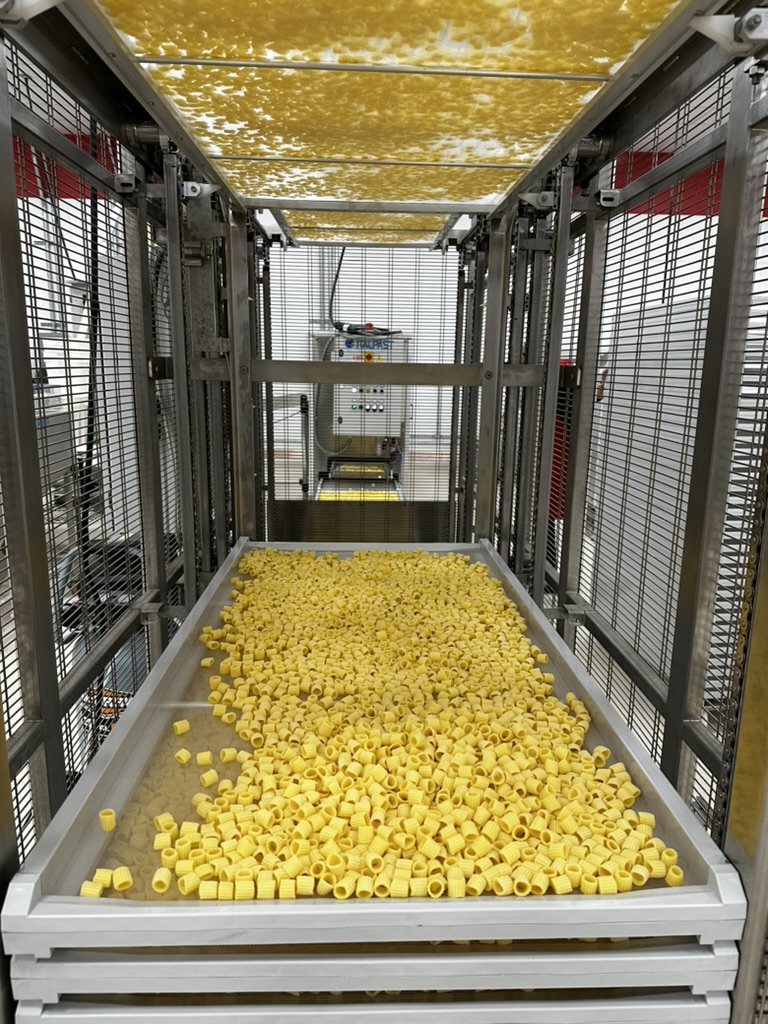
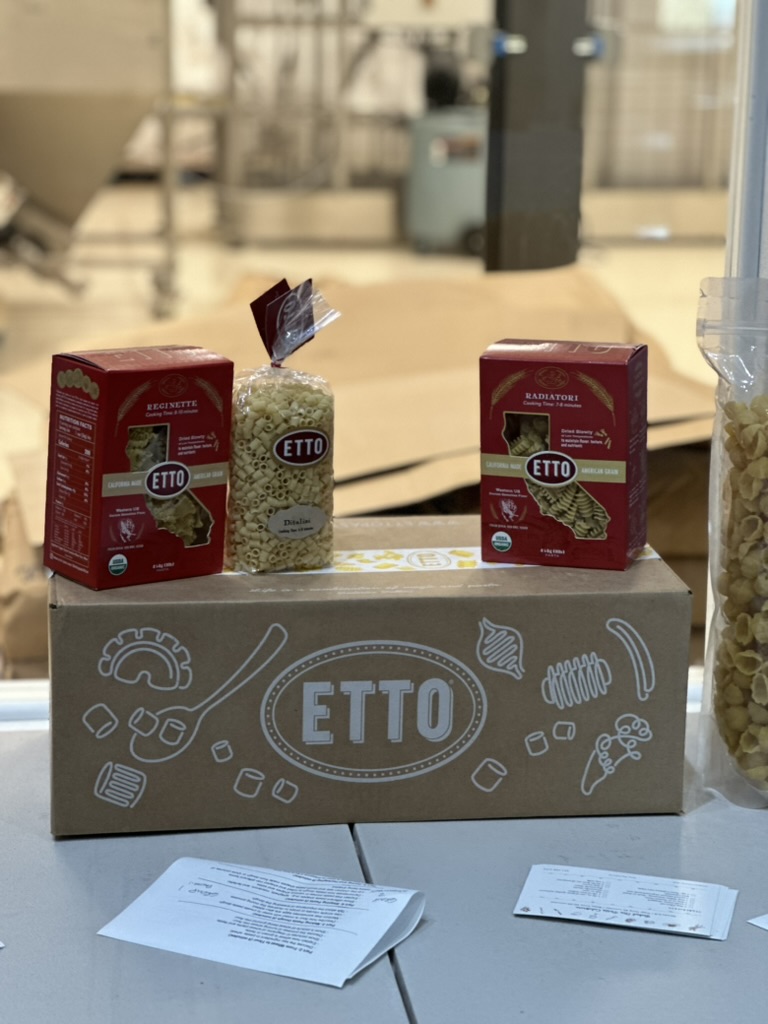
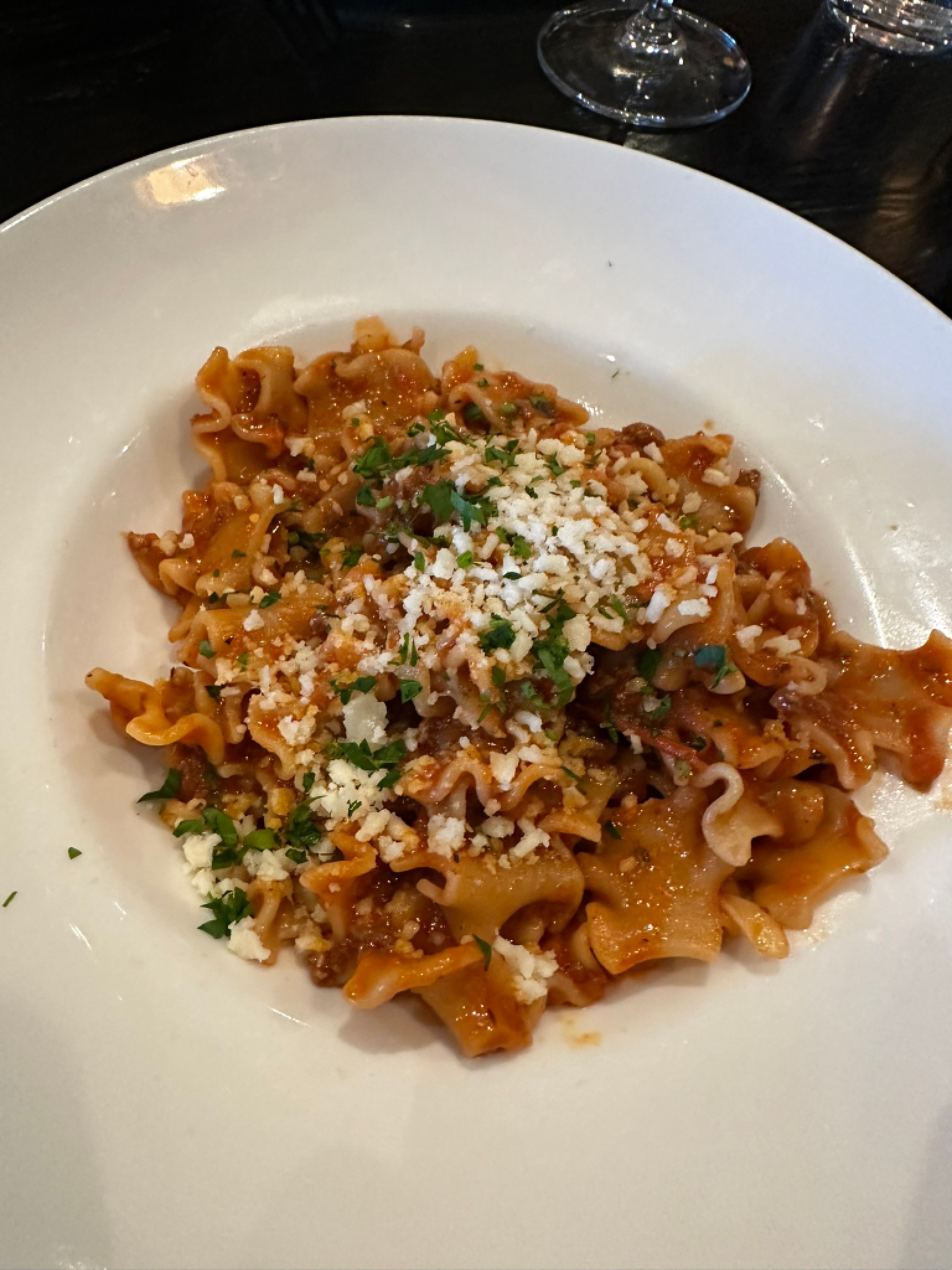
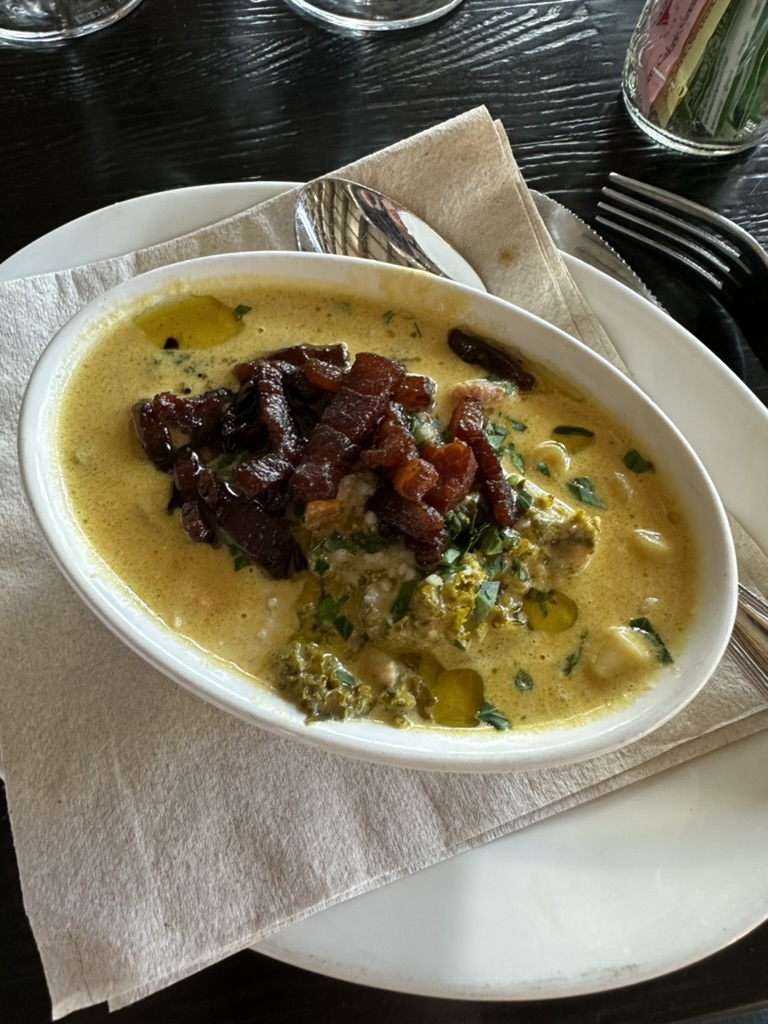
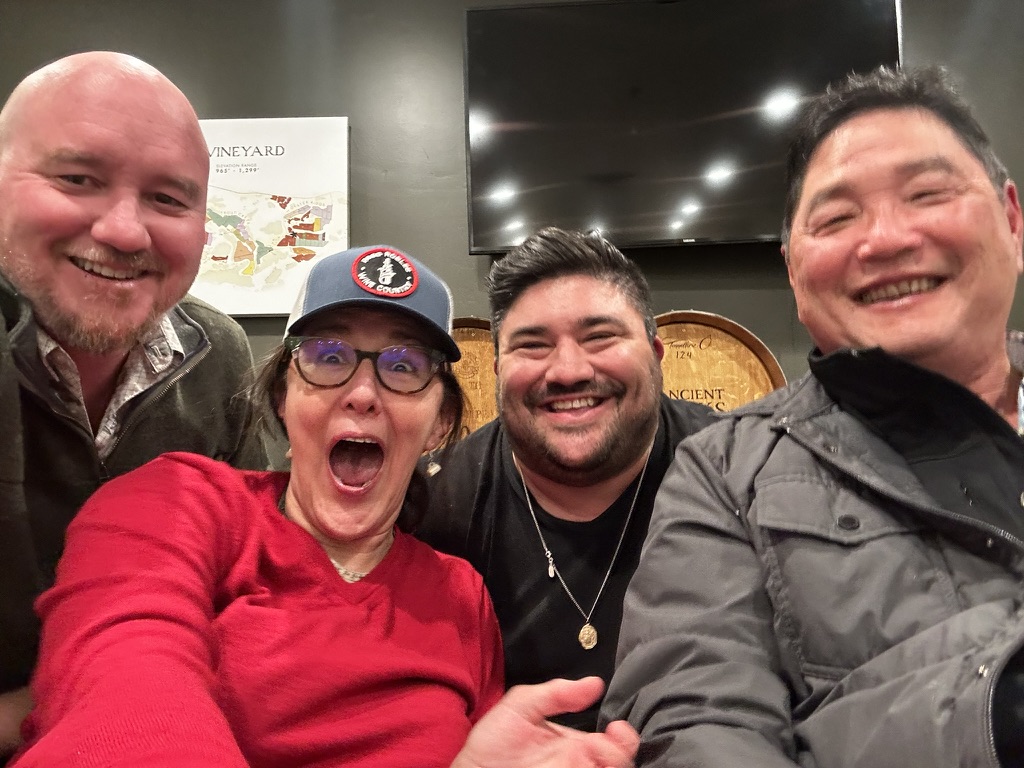
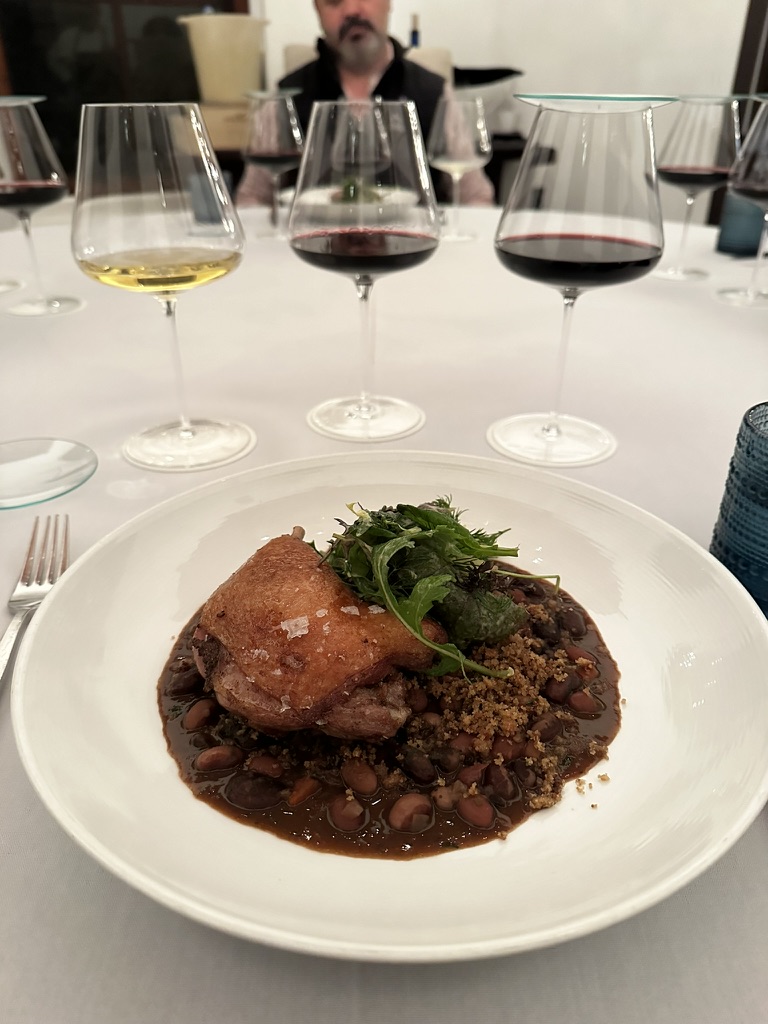
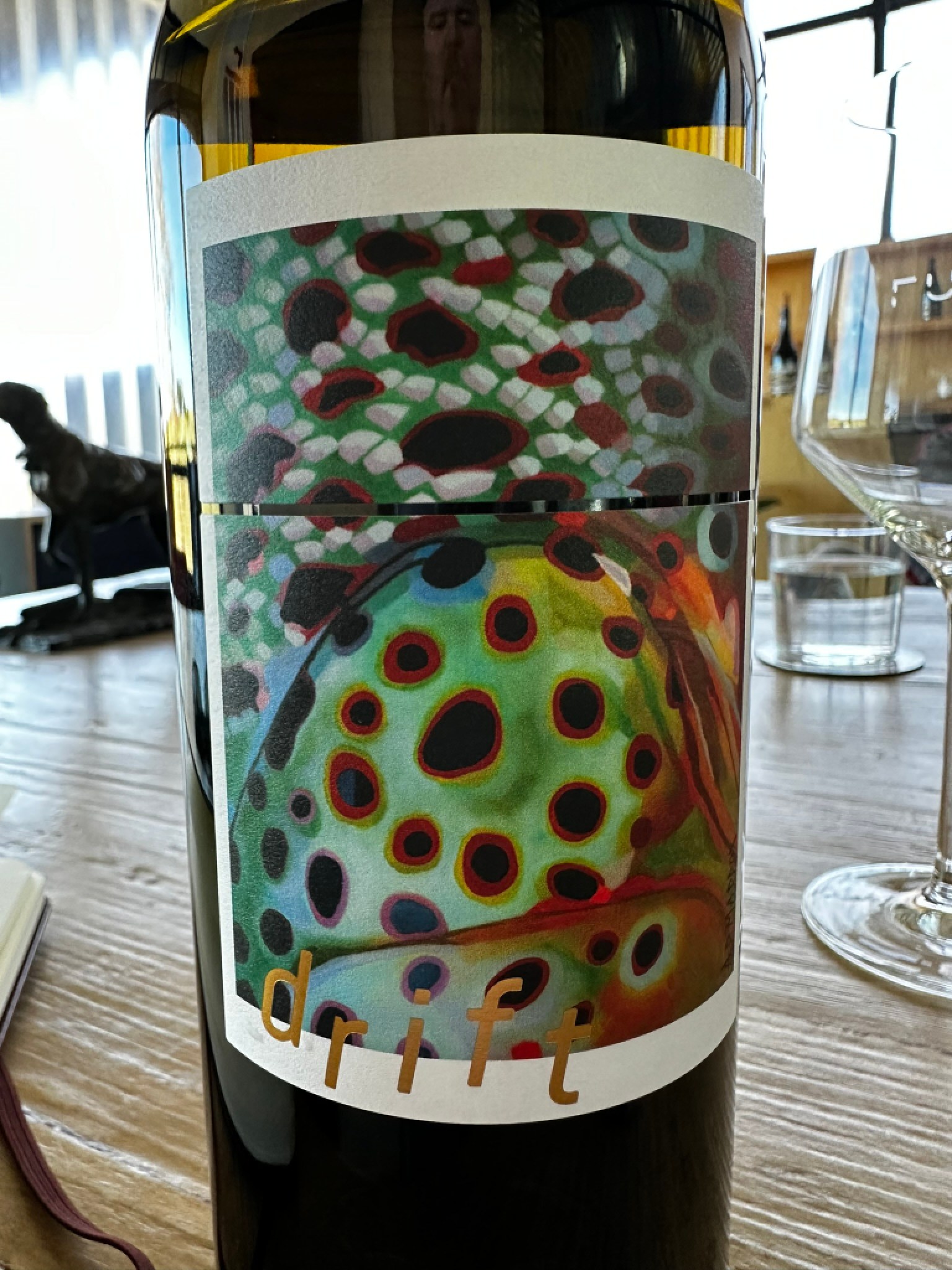
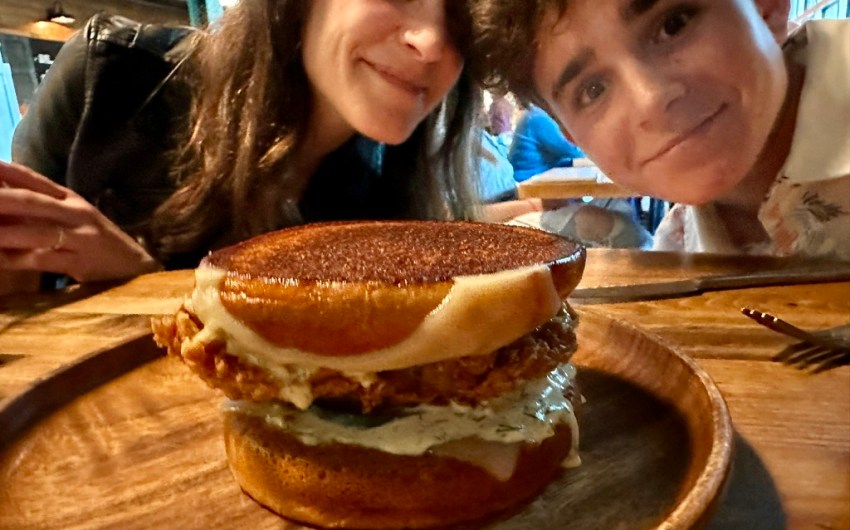
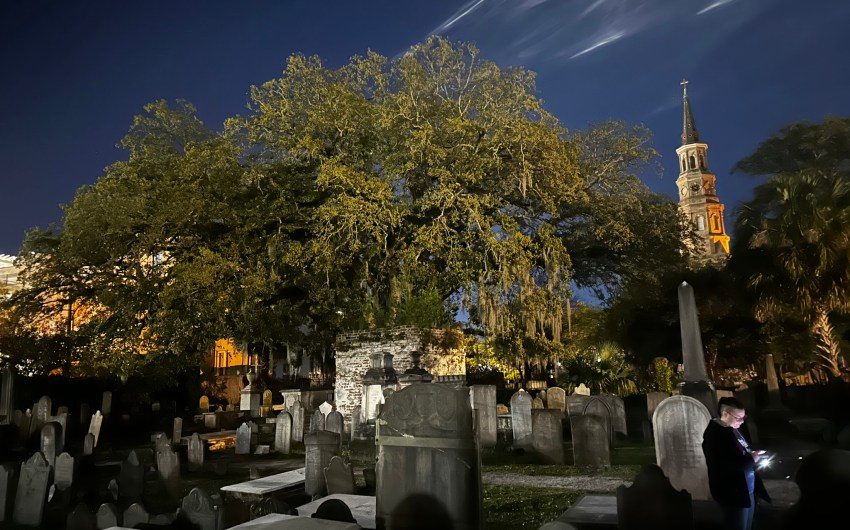
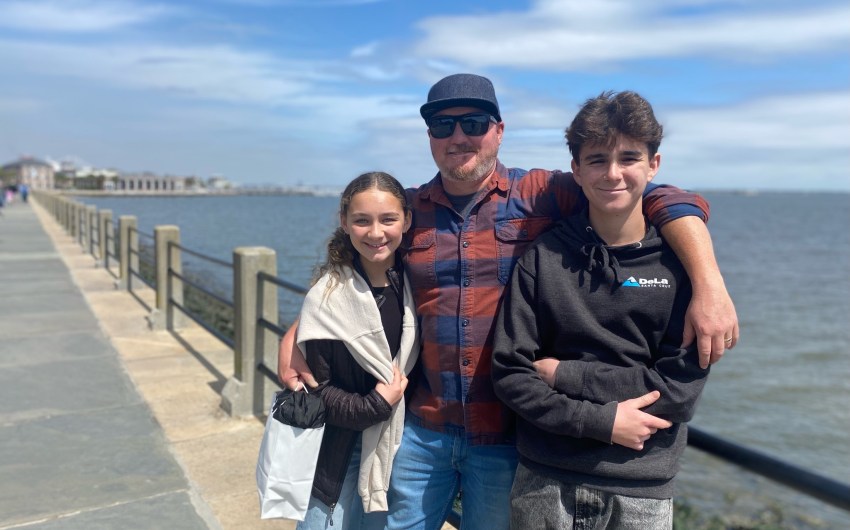





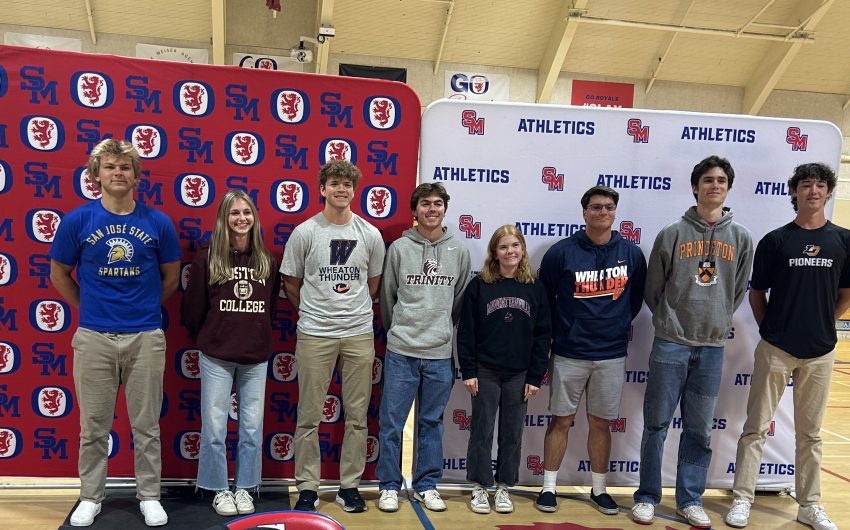
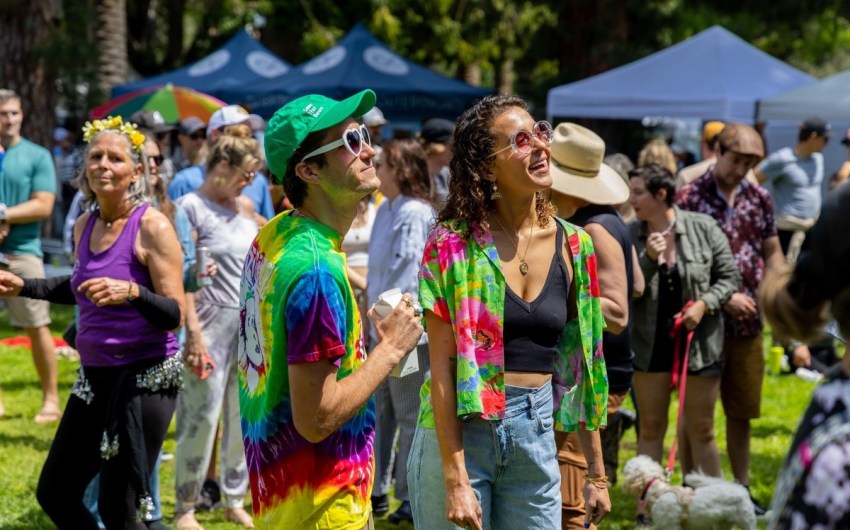
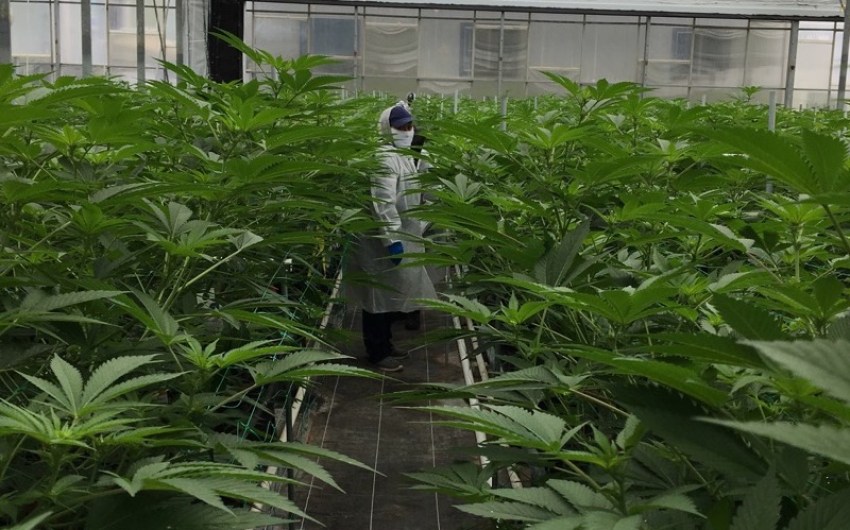
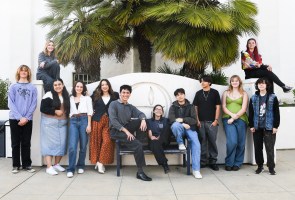












You must be logged in to post a comment.